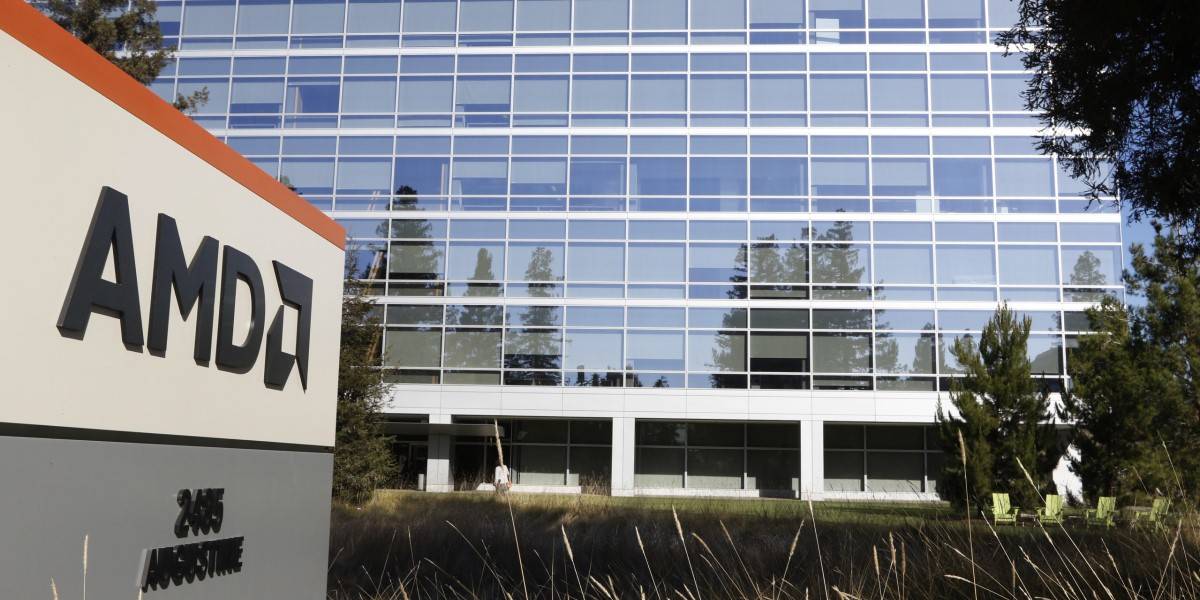AMD Reveals Azure Is Offering Its SmartNICs As-a-service

AMD has revealed it's scored a big customer for its Pensando Data Processing Units (DPUs, aka SmartNICs): Microsoft’s Azure cloud, which is offering them as a service.
The DPUs rated a mention from AMD CEO and chair Lisa Su on AMD's Q1 2023 earnings call, as well as a post explaining that the accelerators power Microsoft's recently announced Accelerated Connections service.
Microsoft suggests deploying Advanced Connections on the virtual NICs of cloudy firewalls and load balancers to increase their throughput. Now we know there's AMD Inside making that happen – a notable win, as while hyperscalers routinely use DPUs they're integrated into their services and not rented like other cloudy resources.
News that Azure has adopted AMD's Pensando for a rent-a-DPU service is welcome news in the context of the chip shop's otherwise tepid Q1 results.
Revenue of $5.35 billion was down nine percent year on year, producing a $139 million loss compared to Q1 2022's $786 million of profit.
Revenue from processors destined for client devices declined 65 per cent year-over-year to $739 million as AMD "shipped significantly below consumption to reduce downstream inventory."
Su said this quarter represents "the bottom for our client processor business" but added that she expects the entire PC market to contract 10 percent in 2023, leaving 260 million units for suppliers to scrap for.
AMD's Datacenter segment delivered flat revenue of $1.3 billion, with higher sales of EPYC processors to cloud customers offset by lower enterprise server processor sales.
Operating income for the segment was $148 million, or 11 percent of revenue. That's a big dip compared to figures of $427 million and 33 percent for Q1 2022.
Su said the drop was "primarily due to product mix and increased R&D investments to address large opportunities ahead of us." Some of that R&D was on GPUs to ensure AMD can cash in on AI. Q1 was also the first period in which AMD counted expenses accrued by Pensando, which it acquired in mid-2022.
- AMD probes reports of deep fried Ryzen 7000 chips
- Intel's $2.8B Q1 loss and 36 percent revenue slide were slightly less horrible than expected
- Microsoft suggests businesses buy fewer PCs. No, really
- Industrial design: AMD brings 4th gen Epyc power to embedded applications
She didn't explain exactly what that means, but did mention that AMD's Bergamo silicon – data center CPUs with up to 128 cores intended for cloud native workloads – will debut "later this quarter."
The CEO also offered her opinion that AMD's Zen 4 architecture, and the Genoa processors within which it can be found, leave the company "extremely well positioned for enterprise where we have been underrepresented." That's a long-standing bugbear for AMD which, despite producing top-notch products, has struggled to convince buyers they have an X-factor worthy of displacing Intel's Xeons.
But Su also warned that adopting Genoa, and Bergamo, won't be swift. It's a new platform which includes PCI 5 and allows use of DDR5 memory – two techs new to the cautious folks who build and operate datacenter infrastructure.
The CEO predicted the second half of 2023 would deliver better results, as both client and server sales pick up.
Several analysts asked Su if AMD is positioned to catch the wave of generative AI. Her answer was essentially "yes" – AMD has the processors and GPUs needed to make AI work, so years of strong sales are in prospect.
Su was also asked how hyperscalers' increasing appetite for their own silicon might impact AMD. She responded with an argument that AMD's ability to offer CPUs, GPUs, FPGAs, adaptive SoCs, and DPUs – plus its operation of a semi-custom team that's delivered tech such as CPUs for gaming consoles – means AMD can serve those who want custom chips rather than being threatened by them. ®
From Chip War To Cloud War: The Next Frontier In Global Tech Competition
The global chip war, characterized by intense competition among nations and corporations for supremacy in semiconductor ... Read more
The High Stakes Of Tech Regulation: Security Risks And Market Dynamics
The influence of tech giants in the global economy continues to grow, raising crucial questions about how to balance sec... Read more
The Tyranny Of Instagram Interiors: Why It's Time To Break Free From Algorithm-Driven Aesthetics
Instagram has become a dominant force in shaping interior design trends, offering a seemingly endless stream of inspirat... Read more
The Data Crunch In AI: Strategies For Sustainability
Exploring solutions to the imminent exhaustion of internet data for AI training.As the artificial intelligence (AI) indu... Read more
Google Abandons Four-Year Effort To Remove Cookies From Chrome Browser
After four years of dedicated effort, Google has decided to abandon its plan to remove third-party cookies from its Chro... Read more
LinkedIn Embraces AI And Gamification To Drive User Engagement And Revenue
In an effort to tackle slowing revenue growth and enhance user engagement, LinkedIn is turning to artificial intelligenc... Read more

